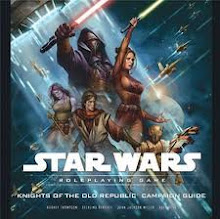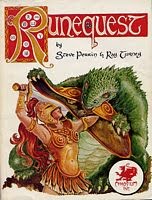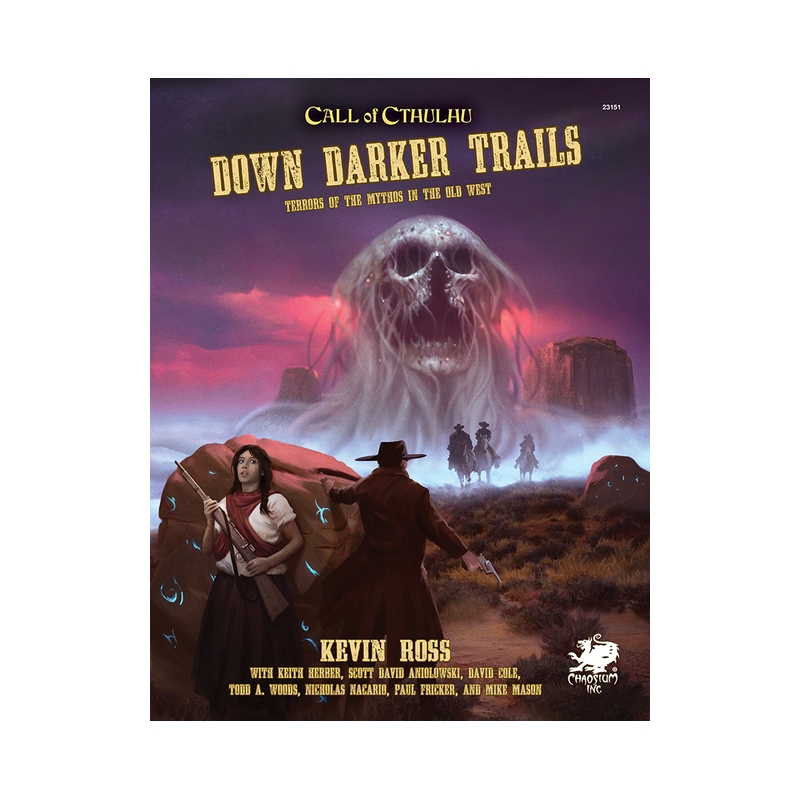
Even though I have been a gamer for around three decades, I do not consider myself any kind of expert in the history of RPG’s (one of the reasons I decided to take a more low-brow approach in my blogs). I was mostly about the gaming, not the “Behind the Music” stuff. But I am old school, and I did love Blackmoor like I did so many books and supplements of my youth. But 99% of what I know about the man behind Blackmoor, I learned in the last few months.
I am indeed a child of the white box, and I owned the Blackmoor supplement in Jr. High. I didn’t know a ton about the dude that put it together, I just knew I loved what was inside it, including that Temple of the Frog. I probably used that setting a half dozen times when I needed a quick adventure. I probably only used “The Lichway” from White Dwarf magazine more for first level games.
Most of my friends had gotten into the game a couple years after I discovered it, and by then were picking up the newer, larger box Dungeons and Dragons books, so Blackmoor was my little secret. It had already been around for quite a while by the time I got my own group together. Before that, it was all about reading those original booklets, and day dreaming of the adventures to come (I also played in solo games “run” by the dickwad who got me into the game, but he didn’t own any books. He just had dice and made it up as he went along (You can read about this in my first post at my secret blog mygaminghistory.blogspot.com).
So outside of that, I didn’t know much about Dave. What little I did beyond the Blackmoor book I probably overheard at Aero Hobbies in Santa Monica when I hung out there. Let’s face it, Gygax was the man. To me and my friends, he was the God of D&D. I didn’t know that Gygax was the “money man” who handled the biz, and also that Gary wasn’t all that fond of what made Dave’s games great (I imagine, anyway) – Gary was a rules guy, and Dave was the role-play guy.
Now I have to say, I just gamed over the decades and didn’t put much effort into learning the behind the scenes antics. But as an adult I love that stuff, and so in the last year or so have learned so much about Gary and Dave, and others who made the hobby what it is. My minor heroes included Dave Hargrave and Paul Jaques, but Gygax and Arneson got the boat sailing.
It seems that Gary was more into the mechanics of things: encounter charts, stats, lists, various minutiae. But Dave was the true role-player with the unique voicing of NPC’s and getting deeper into characterization. The role-play aspects are what I love the most; the power of bringing a personality to life. So really, I guess in that respect Dave H. is my father of role-playing. That he was a true wargamer, but softened up to include personality and warmth into his gaming style, says a lot for the guy. A certain openness that I think was in my genes as well as a DM. Gary G. was into a lot of the details that I chose to leave a lot out of my game. What Dave was into was a lot of what I loved and chose to build on. I could not get enough character growth in my game.
Even so, Dave came up with a couple of my favorite mechanics – those of hit points and AC. He was a wargamer at the core, and these details came from a civil war wargame he had worked on. These were the concepts we used the most outside of games. Got hurt in the football game and was bleeding from the lip. “Shit, I think I’m down 3 hit points.” Or somebody throws something at you and you dodge it easily “You can’t hit my AC dude!” The only things we came close to using so much in real live was saving throws (“I got a cold, failed my save”), and alignment (instead of asking a chick her sign, we’d say “Hey baby, what’s your alignment?”).
So both these guys came together like chocolate and peanut butter to make a game that has taken up a lot of my life. I love them both. I just wish Dave had appeared in that Futurama episode right next to Gary, rolling a D20 to see if it’s “a pleasure to meet you!”
I am indeed a child of the white box, and I owned the Blackmoor supplement in Jr. High. I didn’t know a ton about the dude that put it together, I just knew I loved what was inside it, including that Temple of the Frog. I probably used that setting a half dozen times when I needed a quick adventure. I probably only used “The Lichway” from White Dwarf magazine more for first level games.
Most of my friends had gotten into the game a couple years after I discovered it, and by then were picking up the newer, larger box Dungeons and Dragons books, so Blackmoor was my little secret. It had already been around for quite a while by the time I got my own group together. Before that, it was all about reading those original booklets, and day dreaming of the adventures to come (I also played in solo games “run” by the dickwad who got me into the game, but he didn’t own any books. He just had dice and made it up as he went along (You can read about this in my first post at my secret blog mygaminghistory.blogspot.com).
So outside of that, I didn’t know much about Dave. What little I did beyond the Blackmoor book I probably overheard at Aero Hobbies in Santa Monica when I hung out there. Let’s face it, Gygax was the man. To me and my friends, he was the God of D&D. I didn’t know that Gygax was the “money man” who handled the biz, and also that Gary wasn’t all that fond of what made Dave’s games great (I imagine, anyway) – Gary was a rules guy, and Dave was the role-play guy.
Now I have to say, I just gamed over the decades and didn’t put much effort into learning the behind the scenes antics. But as an adult I love that stuff, and so in the last year or so have learned so much about Gary and Dave, and others who made the hobby what it is. My minor heroes included Dave Hargrave and Paul Jaques, but Gygax and Arneson got the boat sailing.
It seems that Gary was more into the mechanics of things: encounter charts, stats, lists, various minutiae. But Dave was the true role-player with the unique voicing of NPC’s and getting deeper into characterization. The role-play aspects are what I love the most; the power of bringing a personality to life. So really, I guess in that respect Dave H. is my father of role-playing. That he was a true wargamer, but softened up to include personality and warmth into his gaming style, says a lot for the guy. A certain openness that I think was in my genes as well as a DM. Gary G. was into a lot of the details that I chose to leave a lot out of my game. What Dave was into was a lot of what I loved and chose to build on. I could not get enough character growth in my game.
Even so, Dave came up with a couple of my favorite mechanics – those of hit points and AC. He was a wargamer at the core, and these details came from a civil war wargame he had worked on. These were the concepts we used the most outside of games. Got hurt in the football game and was bleeding from the lip. “Shit, I think I’m down 3 hit points.” Or somebody throws something at you and you dodge it easily “You can’t hit my AC dude!” The only things we came close to using so much in real live was saving throws (“I got a cold, failed my save”), and alignment (instead of asking a chick her sign, we’d say “Hey baby, what’s your alignment?”).
So both these guys came together like chocolate and peanut butter to make a game that has taken up a lot of my life. I love them both. I just wish Dave had appeared in that Futurama episode right next to Gary, rolling a D20 to see if it’s “a pleasure to meet you!”
























